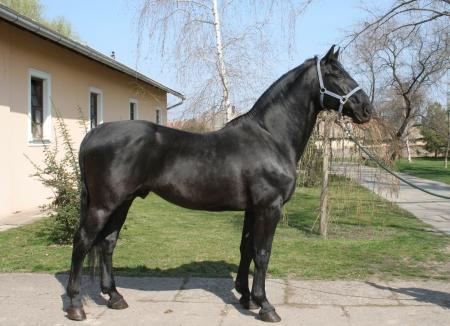
Continent: Europe
Country: Hungary
Weight: 500 – 650 kg
Height: 155 – 165 cm
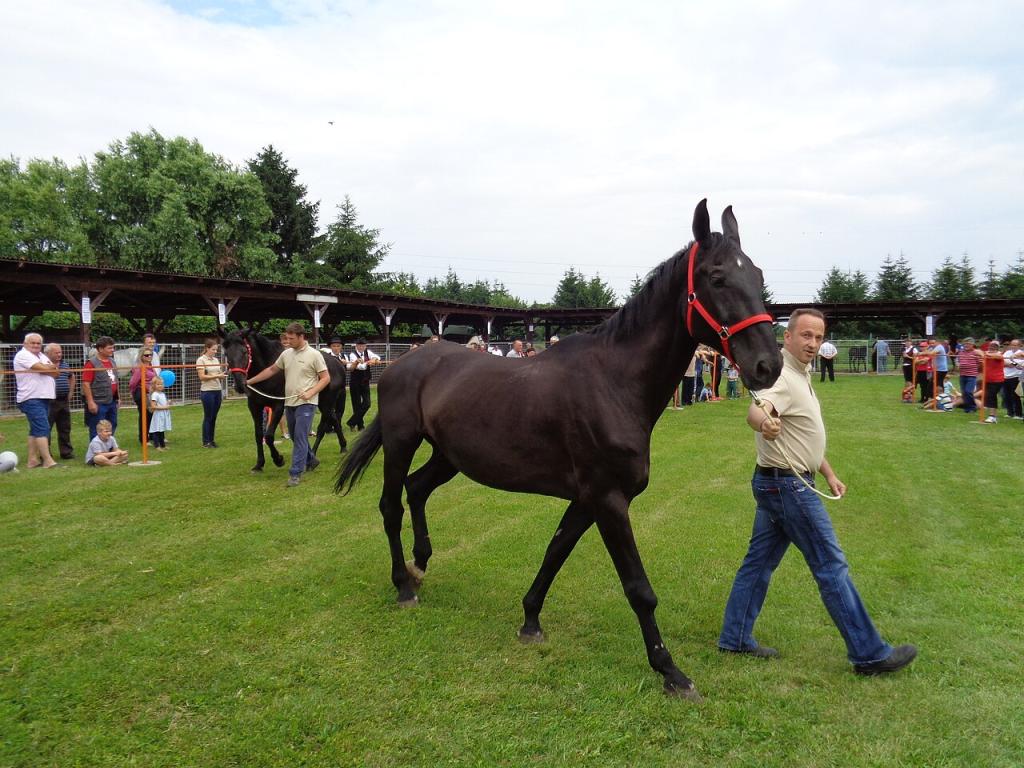
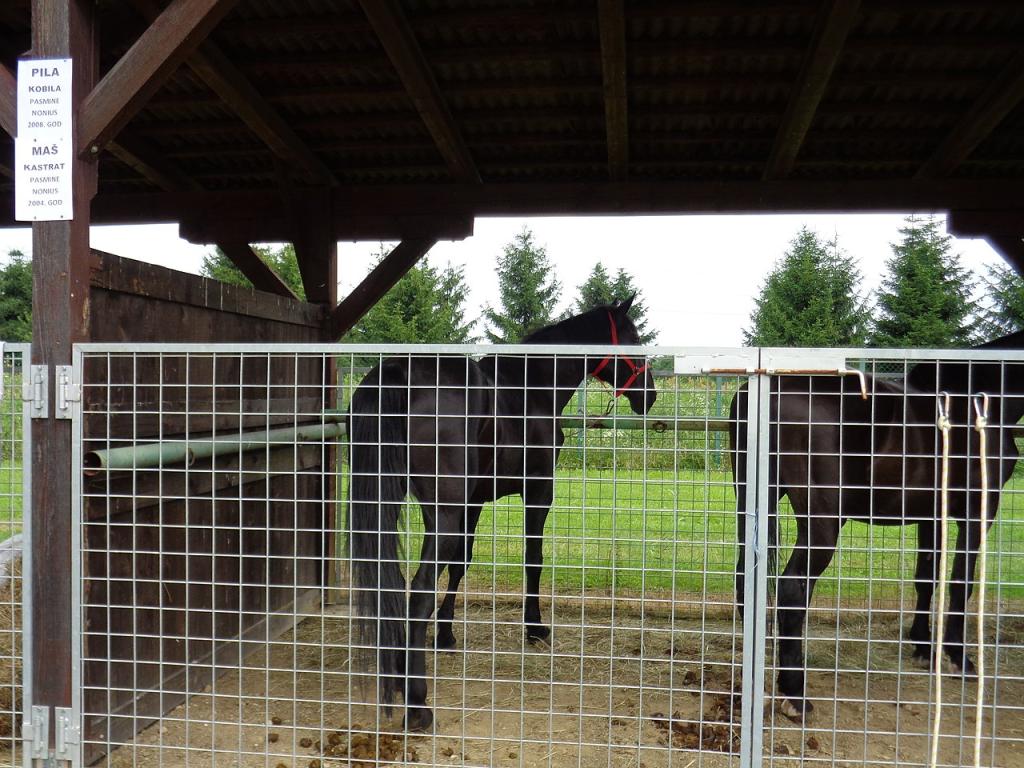
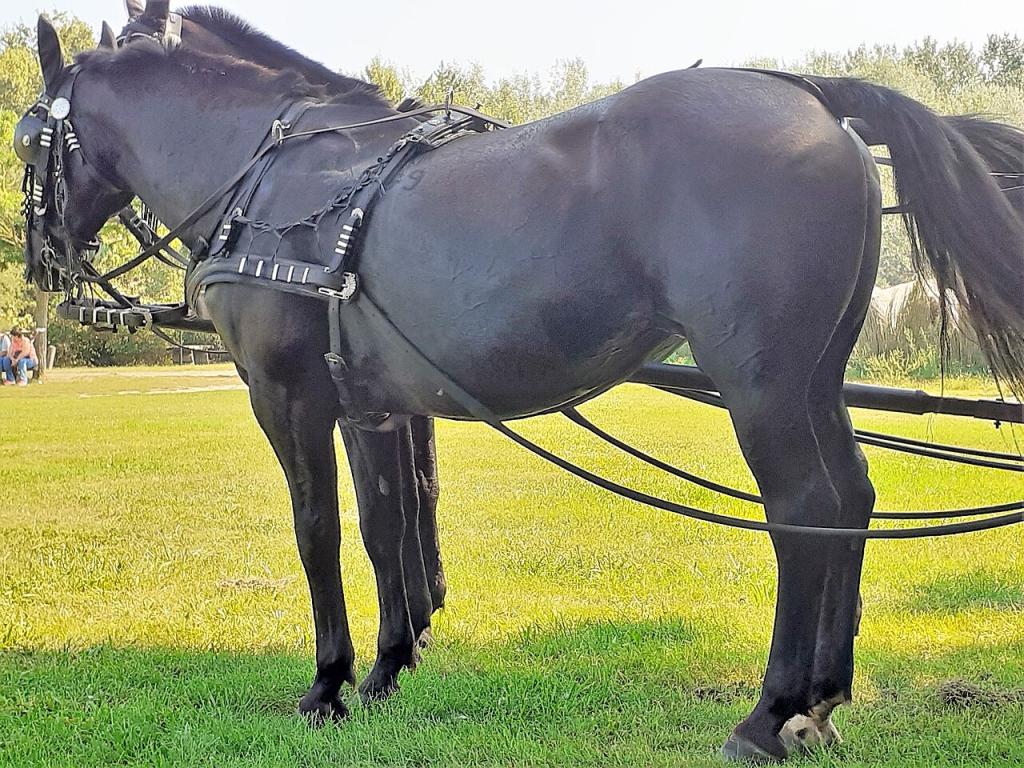
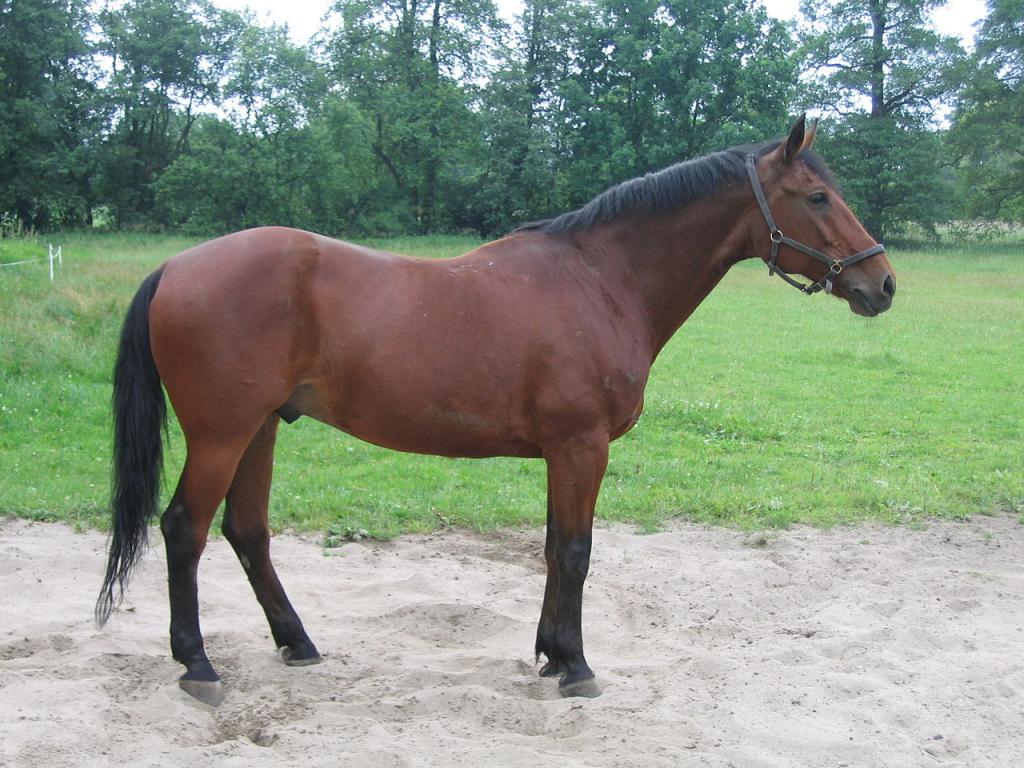
The Nonius horse originates from the Imperial and Royal Stud of Mezőhegyes, located in the Great Hungarian Plain (southeastern Hungary). The stud was founded in 1784 by the Austro-Hungarian Empire.
The breed dates back to the early 19th century, with the founding stallion being the English Thoroughbred Orion Senior (known as Nonius Senior, 1810–1837), who was crossed with local Hungarian, Norman, and Spanish mares.
The Nonius is deeply rooted in Hungarian equestrian tradition, where horses hold a central place in military, agricultural, and social history. It became an iconic military horse used in the Imperial cavalry and artillery teams.
It also left a lasting mark on Hungarian rural life, serving as an essential draft horse in the Great Plain. Today, it is considered a living symbol of Hungarian heritage, celebrated in equestrian festivals and traditional displays.
Though shaped by English (Thoroughbred), French (Norman) and Spanish bloodlines, the Nonius is firmly anchored in Hungarian culture, becoming a national icon and historical symbol.
The state stud of Mezőhegyes, founded in 1785 in Hungary’s Great Plain, remains the historical heart of the Nonius breed. The breed was officially established here in the 19th century, and the studbook is still managed at this location today.
The Nonius is mainly bred in the Alföld regions (Hungarian Plain), where it thrives on flat land and a continental climate. Several state and private studs continue to breed the Nonius as a national heritage horse.
During the 19th and 20th centuries, the breed spread throughout the Austro-Hungarian Empire. It contributed to improving local draft and driving horses in countries like Romania, Serbia, Slovakia, and more broadly in Eastern Europe.
Today, the breed remains concentrated in Hungary, particularly around Mezőhegyes. Breeding efforts now focus on preserving this identity breed, officially recognized as part of Hungary’s cultural heritage and supported by national conservation programs.
The Nonius is one of the most emblematic breeds of Hungary, alongside the Lipizzan, Kisber Felver, and Furioso-North Star. Originating from the Imperial Stud of Mezőhegyes, it represents a national heritage and played a key role in the military horse breeding history of the Austro-Hungarian Empire.
Thanks to its strong build and pulling power, the Nonius has long been used to improve light draft and driving horses across Central Europe. Its imposing conformation and docile temperament make it a valuable transmitter of strength and hardiness.
Although not bred for speed, the Nonius contributes longevity, natural resistance, and low maintenance needs, all of which are highly desirable in rural and military breeding programs.
Today, the Nonius is no longer used as a sport horse improver, but it retains a strong conservation value. Preserving its diversity is essential to maintain a unique equine type, born of Hungarian half-blood breeding and oriental influence.
The Nonius breed originated at the Imperial Stud of Mezőhegyes, founded in 1785 in Hungary’s Great Plain by the Austro-Hungarian Empire.
The founding stallion was Nonius Senior, a Norman horse captured in 1816 during the Napoleonic Wars. This half-blood stallion stood about 1.60 m tall and passed on a solid build, massive head, and remarkable hardiness.
To refine the somewhat rustic type of Nonius Senior, breeders introduced blood from:
These crosses gave the Nonius a more balanced appearance while retaining its pulling power and stamina. The Mezőhegyes Stud became a prestigious center for breeding military horses for the Austro-Hungarian cavalry.
Throughout the 19th and early 20th centuries, the Nonius served as a heavy cavalry horse, and in military driving teams. Its low-maintenance nature and reliability made it popular in imperial armies, and later in agriculture across Central Europe.
With mechanization in agriculture and the decline of military horse use after WWI, the breed experienced a sharp drop. After 1945, its numbers fell critically low, prompting state-led conservation efforts at Mezőhegyes.
Although considered an endangered breed, the Nonius is officially recognized as part of Hungary’s cultural heritage. It is preserved in state and private studs, showcased in driving events, festivals, and traditional equestrian displays — a living symbol of Hungarian equine history.
The Nonius is known for its even temperament. It is easy to handle, responds well to training, and shows a cooperative nature, making it ideal for driving and leisure riding.
While not built for speed, the Nonius excels in working endurance and frugal management. Its steady character allows it to remain dependable during long sessions or demanding tasks.
Hardy and social, the Nonius integrates easily into herds, whether on pasture or in shared stabling. Its calm disposition reduces conflict with other horses.
Unlike hot-blooded breeds, the Nonius does not show nervous or explosive behavior. It is a measured horse, geared more toward quiet strength than quick reaction.
"The Nonius is a steady and trustworthy horse, combining strength and calm — inspiring confidence both in harness and under saddle."
The Nonius is recognized as a Hungarian cultural treasure, benefiting from government-backed conservation programs. Its future depends on sustained efforts in genetic preservation and on raising awareness about its historical role.
With its elegance in harness and docile temperament, the Nonius is finding new life in cultural exhibitions, tourism, and equestrian shows. These activities offer a modern platform to showcase its value and versatility.
Though no longer a sport horse competitor, the Nonius proves increasingly useful in:
With a limited population, the breed faces long-term risks. Breeding programs must ensure sufficient genetic diversity while avoiding inbreeding. Cooperation between state studs and private breeders is essential to secure its survival.
The Nonius’ future lies in its role as a national identity horse. Preserving this breed is not only a cultural mission, but also a contribution to equine biodiversity, safeguarding a robust and historically shaped type.
The Nonius is known for its strong constitution and longevity. It is well adapted to the sometimes harsh conditions of the Hungarian Plain, tolerating weather changes and requiring modest feeding.
As a military and workhorse, it was selected for physical durability, with few known hereditary diseases and generally high fertility.
Due to its heavy build, some individuals may present:
Regular and careful farriery is essential to prevent strain on limbs. Gradual, well-adapted exercise helps prevent lameness related to heavy pulling or intense driving work.